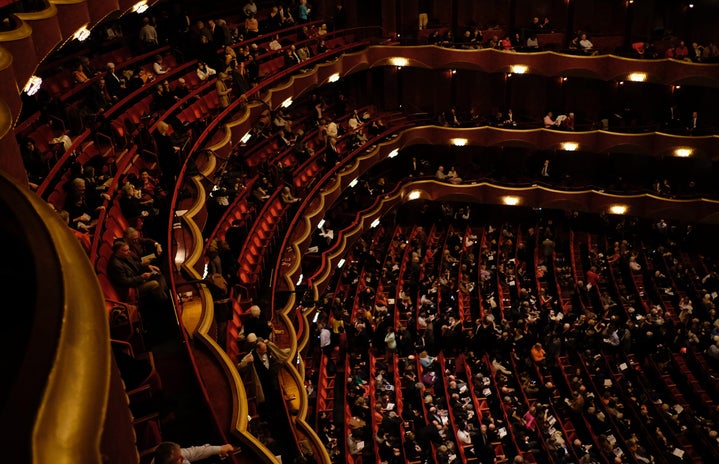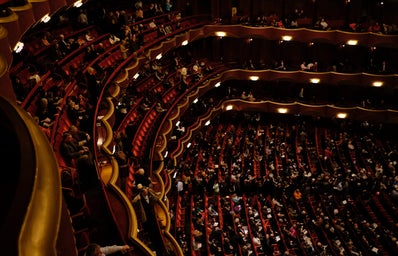When we hear the word “Disney”, pretty castles, princesses, and cheerful songs come to mind. It’s a word that’s mostly associated with happiness and fairy tales; however, is Disneyland the magical kingdom that everyone thinks it is?
Let’s start with a little backstory. Walter Disney was an American entrepreneur, film producer, animator and voice actor. He began the first steps of what would later become the base of his empire during the 1920’s, and the decades that followed were his prime. As with any successful person at the time, he had a reputation to keep, and disturbing rumors arose about his beliefs and values. Disney was accused of racism, sexism, and antisemitism; rumors that him and people close to him dismissed, but his actions said otherwise. Out of all of these, the anti-Semite rumor is probably the most famous one. He was accused of being an anti-Semite due to a scene in the Three Little Pigs where the wolf was portrayed as a Jewish peddler; and we all know who the villain in this classic tale is and how he ends up. To further fuel these accusations, Nazi director Leni Riefenstahl was personally welcomed at Disney’s studios by Disney himself. It was widely known that, although his personal actions didn’t reflect any antisemitic behavior, he enthusiastically welcomed anti-Semites and was in good terms with them, both professionally and personally. Those who knew him, alleged that he practiced tolerance in his home, and that these rumors only stemmed from his association to these people. However, is it ever okay to be on professional and even friendly terms with anyone linked to the fascist movement of Nazi Germany, especially in the 1940’s? The answer is obviously no.
Various Disney movies from the 1940’s held many racial stereotypes, which led to him being accused of racism as well. Dumbo and Fantasia have their share of racial stereotypes targeting black people, and their most racial movie is most likely Song of the South. This movie was so racially insensitive, and it held so many stereotypes and slurs, that Walt Disney Studios has tried to erase it from existence. Aside from these examples, there were other Disney movies with the repeated mention of slurs that are just too inappropriate for me to mention here. The accusations of sexism are not difficult to believe; after all, it is thanks to old Disney princess movies that most girls grew up with the wrong idea that they were fragile and needed a man to change their lives for the better. Snow White and the Seven Dwarfs and The Sleeping Beauty are among the many fairy tale movies that have terrible messages. Not only do they promote the typical damsel in distress syndrome where the prince appears on his dashing horse to save the day; the princes in these two stories kissed the princesses, who were dead, without even knowing who they were. As if it wasn’t bad enough to kiss a dead person, they kissed dead strangers. To make it worse, the princesses married the very invasive princes and lived their happily ever afters. Cinderella was another damsel in distress. Typical portrayal of a submissive woman who settles for the circumstances her life has to offer her until her knight in shining armor saves her, immediately marrying her after she wore a shoe for him. Foot fetish, maybe? The Little Mermaid tells little girls that it’s okay to act like rebellious brats, fall in love with someone you’ve only known for three days, and change who you really are to please that person, including leaving your family and friends behind.
Although most of these movies are just animated and less disturbing versions of classic German tales, Disney didn’t improve the overall message of their original counterparts. From a scale of one to ten, how disturbing is the plot and love story of The Beauty and the Beast if we analyze it? Belle fell in love with a man who threatened to kill her father, who had dangerous fits of violence and anger outbursts, and to top it off; a man who held her captive for months. Belle feared for her life and saw her imprisonment as a torment until she managed to get past his abusive nature and fell in love with him, which was not okay because it just normalizes Stockholm Syndrome, where a victim falls in love with their captor as a way to cope with the trauma. As if all these things weren’t enough of a bad plot and toxic love story, the prince was, quite literally, a beast. Even if he had the soul and mind of a human, his body was that of an animal, and Belle was totally with it. Bestiality much? The movie’s message is interpreted as this beautiful love story where a woman falls in love with a man and ignores his ugly appearance and rough personality, showing us that we shouldn’t fall in love with people’s looks and we should focus on what’s in their hearts instead. Unfortunately, it would have been a beautiful message to convey if the prince hadn’t been a beast, and a very abusive one at that.
Since Disney had an odd fixation with toxic relationships, Pocahontas needed a place in this recount of bad romances. Her story was sold as a cheap love story between a teenager Pocahontas and a not much older John Smith. Pocahontas fell in love with him, betrayed her tribe to save him, and at the end, he left her. The real version is way different; Pocahontas had been a child when John Smith and the other colonists arrived and posed a threat to her tribe. He was 27 and had a bad reputation among the native tribes, as most colonists did, but Pocahontas’ father took a liking to him. She and Smith never crossed paths until she was older, and neither of them cared about the other. She was kidnapped by the English colonist Captain Samuel Argall and forced to live in terrible conditions for years. She was sexually assaulted in various occasions and became pregnant with her second child. As rumors of abuse towards Native Americans found their way to England, the colonists were desperate to show their fellow English citizens that things were good between them and the natives, and colonist John Rolfe married Pocahontas. He took her to Europe to parade her in front of the nobles, and soon after, he tried to take her back to Virginia, but she died before they had left England. The cause of her death is unknown; however, many think she was very ill with tuberculosis, or that she had been poisoned. She never knew John Smith, and they never had a romantic love story. The fact that Disney tried to erase history and portray Pocahontas’ story in such a way is insulting to Native Americans.
Sadly, Pocahontas is not the only minority that Disney has failed to honor, as they seem to have a problem with giving important roles to minorities. Jasmine was a spoiled girl who lived under her father’s controlling rule and fell for a thief, a thief who changed his entire personality and pretended to be someone else just to get her to like him; sound familiar, Ariel? Throughout the decades, Disney had the opportunity to create many intriguing and interesting characters apart from the same prototype of white helpless princesses, but it wasn’t until 2009 that they released The Princess and the Frog, the first Disney movie with a black woman as a protagonist. Tiana had many good qualities; she was a fighter, a good friend, resilient, and exceptionally hard working, but she wasn’t a princess. Naveen was the only royal, Tiana was just a common girl who struggled to achieve her dreams. Although the movie had some good elements such as Tiana’s strength and determination and her wholesome friendship with Lottie, it lacked in other things as well. Again, she and Naveen fell in love and got married in the span of three days, typical Disney fashion. Not to mention that this short amount of time was enough for Naveen to leave his womanizer past behind and be a responsible adult. Sounds too good to be true. Since then, there have been no other princesses from other nationalities besides European. Mulan is not a princess, she is the heroine of a classic Chinese tale, and Moana was the daughter of the tribe chief, who later became chief herself. Although these are good examples of non-white protagonists, there aren’t any minorities when it comes to princesses. If Naveen was a prince from Maldonia (a fictional country), it would not be difficult for Disney to come up with a beautiful, original story featuring a non-white princess from a different nationality.
Disney’s lack of creativity and originality in their content is evident now more than ever through their unhealthy obsession with remakes. Disney, please stop it. If there is something that many people can agree on is that remakes and live adaptations are not a good idea. Most times, the original version of a book or an animated movie have a certain charm that live adaptations and remakes will never get right. The audience is always left craving that extra element that the original version had, and live adaptations/remakes cannot compete against a good original. Whether it’s the characters’ appearance, or big changes in the plot, live adaptations and remakes are widely criticized and known to have ruined the original versions of their books or movies. However, there are cases where an original version could be improved through a live adaptation or a remake, as seen with the examples of terrible love stories and plots mentioned before, but Disney did not take the opportunity to do so. The company prefers to keep turning all of their animated movies into unfulfilling live adaptations while we are dying for new stories, characters, and adventures.
All being said, Disneyland is still a beautiful place where you can go and enjoy multiple fun rides, get cute merch, and have a great time with your loved ones. October and November are exceptionally good months to visit Disneyland since it’s emptier and plane tickets are cheaper, plus there are many economic traveling offers you can use to your advantage. There are many good Disney movies, and everybody has a favorite Disney princess, but every coin has two sides and it’s important to not dismiss a company’s dark history and bad sides, even if that company is “the most magical place on Earth”.



